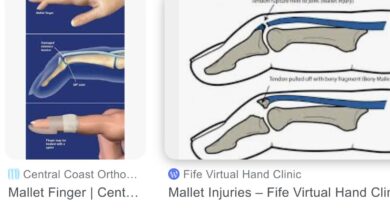HEEL PAIN: PLANTAR FASCIITIS

“My Heel is Killing Me”
PLANTAR FASCIITIS IS REAL PAIN!
If you’ve ever had heel pain you know it’s a real nuisance. You can’t run, you can’t jump, it hurts to stand up from a chair, and when you get out of bed, it “kills” you! But after walking for awhile, it eases up. The pain can go away, but after you sit for awhile, when you stand up, it starts all over again. What a pain! It can be very debilitating. The first time I had it was in high school. I was on the basketball team, and we wore Converse All-Star shoes with thin soles and no arch support. Every day after practice, I limped with heel pain. I guess because I was young it just went away. Unfortunately, it returned when I was in my fifties. This time the pain was unrelenting. I was running regularly in bad shoes on paved county roads. The pain in one heel lasted one year, and in the other heel, fifteen months. For over two years I was very badly affected by heel pain. I was unable to do many of the things I enjoyed doing. It hurt so badly, I feared being unable to run to escape an emergency situation.
I really don’t remember having any lectures about heel pain in medical school nor was there any rotation with a foot specialist (Podiatrist) during my residency. The Orthopedic Surgery Department would have been the deliverers of that Information, but they acted like people didn’t have feet. They were focused on fracture care, back surgery, knee reconstruction, and later, joint replacement. I learned more about heel pain from having it myself than from any lecture or seminar. My diagnosis was Plantar Fasciitis. You may have had it, too, because a lot of people do. In fact, ten percent of the general population has heel pain accounting for one million patient visits to doctor’s offices annually. Plantar fasciitis (PF) is the most common problem seen by podiatrists, so they are the experts in treating it. The incidence of PF increases with age (83% of cases are age 25-65), men have it more often women, and athletes, especially runners, are very susceptible. Between 4% and 22% of all runners experience it at some time.
Plantar fascia is the ligamentous structure that holds the arch of the foot together. It’s like the bowstring on a bow (like in bow and arrow) extending from the heel to the toes. The arch has a springy effect which allows flexibility in the foot, but that flexibility is limited by the length and strength of the plantar fascia. If there is repeated forceful stretching of the plantar fascia from running, jumping, and overuse of any kind, micro tears develop in the fascia where it attaches to the calcaneous (heel bone). These tears become inflamed and cause the pain we experience. Some investigators have shown these tears to be from degeneration of the collagen within the fascia. They say “plantar fasciosis” is a more appropriate name. But whatever the situation, the result is very troublesome heel pain.
Patients with PF are frequently obese, have flat feet, high arches, and tight calf muscles, and on x-ray have heel spurs. Ten to 20% of the general population has heel spurs, but only 5% of those patients have heel pain. Heel spurs are NOT the cause of heel pain. Lots of people have painless heel spurs but evidence shows it’s not the spur that’s causing the pain. “Surgically removing a heel spur does not necessarily relieve the pain.”
The symptoms of PF are mentioned above. Patients have pain in the heel upon arising from bed or after sitting in a chair. With walking, the pain gradually eases (mine never did). The bottom of the heel is tender to firm pressure. It feels like you’re walking on a large piece of iron attached to the bottom of your heel.
All sorts of treatments are used to relieve PF, but 90% of cases resolve on their own in 9-12 months. My first episode lasted a year and the other fifteen months. Rest, ice packs, heel and Achilles stretching exercises, anti-inflammatory medications, soft supportive shoes with orthotic inserts, and cortisone shots (three times in each heel) were all tried. Finally, after a year of misery, the pain went away. The second episode occurred a year later in the other heel. In addition to those treatments, I wore a lower leg and ankle splint at night. Every night from November to March the plantar fascia was stretched by holding my ankle in a flexed-up position. I faithfully wore that splint, and eventually my heel improved. Surgery was, and is, an option (endoscopic plantar fascia release), but outcomes from that aren’t always as good as expected.
Of course, other things can cause heel pain, too. Rheumatoid Arthritis, Achilles tendinitis, Achilles tendon rupture, bursitis, osteomyelitis, Paget’s disease, peripheral neuropathy, sarcoidosis, and fracture are some, but Plantar Fasciitis is the most prevalent diagnosis.
Since the second episode I’ve had no further problem with PF. My feet still pronate (are flat), and I still have bone spurs on each heel, BUT I NEVER FAIL to wear the orthotic shoe inserts my podiatrist made for me. I never go barefoot and wear shoes everywhere. One episode of Plantar Fasciitis in a lifetime is enough, and if you’ve had it you know what I’m talking about.
References:
- painscience.com/tutorials/plantar-Fasciitis
- mayoclinic.org/diseases-conditions/plantar-Fasciitis
- American Family Physician Vol.63, Number 3, February 1, 2001
- Orthoinfo.aaos.org/en/diseases—conditions/plantar-Fasciitis-and-bone-spurs
5. lermagazine.com/article/the-epidemiology-of-plantar-Fasciitis
6. American Academy of Podiatric Sports Medicine: “Plantar Fasciitis: Treatment Pearls” by
Douglas Ritchie Jr, DPM.




